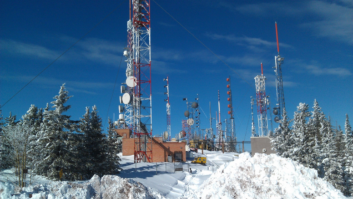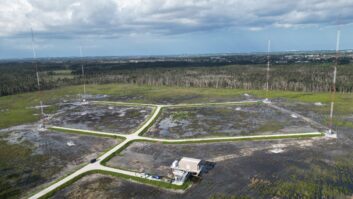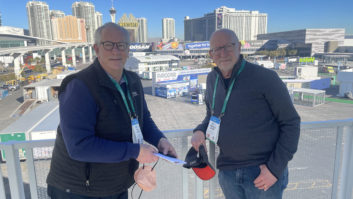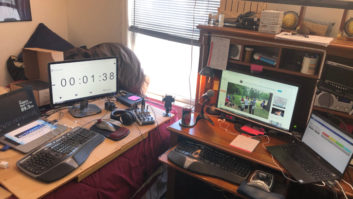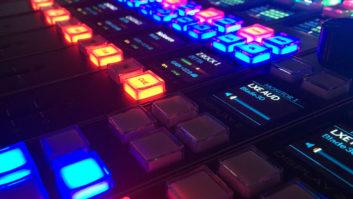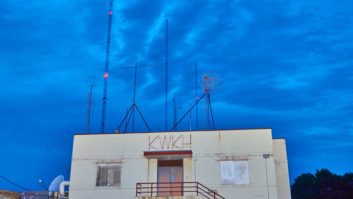Among technical presentations that grabbed the most interest at the most recent NAB Broadcast Engineering Conference was one by Chuck Kelly, director of sales for Nautel Ltd., about radio’s noise floor. Here, Kelly provides a synopsis of his paper.
The proliferation of high-frequency devices in the home, workplace and car has led to a dramatic increase in noise floor levels to the detriment of AM and FM broadcasting.
Data about current noise levels, both theoretical and anecdotal, is available and can help broadcasters make changes to maintain their coverage area.
Noise in the radio frequency bands has been with us since the beginning of broadcasting. There are reports of Marconi complaining about ignition noise from early cars.
While natural sources of noise, including atmospheric noise and cosmic noise, have remained relatively stable over the last century, man-made noise has increased due to the proliferation of unintentional radiators such as microprocessor controlled devices, fluorescent lighting, RF lighting, dimmers, switched-mode power supplies and remote-control devices.

Noise sources
Radio noise comes from a variety of sources, both man-made and natural, and the intensity varies on both a time-of-day as well as a seasonal basis. Frequency distribution also depends on the noise type.
The main two kinds of natural noise sources are atmospheric and thermal. Lightning is the primary atmospheric noise source and varies due to the proximity to storms and the time of the year. The noise amplitude caused declines of roughly 50 dB per frequency decade from 10 kHz to 10 MHz.
Atmospheric noise is the dominant natural noise source in the AM band. Atmospheric noise is more problematic at night because distant lightning storms can propagate long distances via skywave.
The thermal agitation of electrons causes thermal noise, also known as Johnson-Nyquist noise. Thermal noise is roughly linear with respect to frequency. Because atmospheric noise declines so dramatically with frequency, thermal noise is the dominant natural noise source on the FM broadcast band.
Man-made noise
Six broad categories of man-made noise exist: power lines, light dimmers, microprocessors and high-speed digital circuity, touch-control lamps, broadband over power lines and co-channel or adjacent stations.
Arcing across power line equipment often causes power line noise. Such noise declines in amplitude with frequency and typically is more troublesome in rainy and windy conditions.
Power line noise affects AM and FM but is most often noticed on AM because the recognizable buzz is demodulated in an AM receiver more readily than on FM. Power line noise is carried and radiated by the high-tension lines, compounding the problem.
Light dimmers made for home use incorporate thyristor devices that switch the AC line voltage with a very fast rise time. Unless effective filtering is used, these fast rise times can cause ringing that creates interference primarily in the AM band. Again, the AC power distribution serves as the antenna for the noise.
Huge advancements have been made in the speeds of computers, while at the same time there has been significant growth in the number of microprocessors and high-speed digital circuitry in so many other devices in regular household use. Since these devices include clocks ranging from a few kilohertz to hundreds of megahertz, even when effective shielding and filtering are used the cumulative effect raises the noise floor in the home, office and automotive environment.
The noise generated by high-speed logic has caused serious problems in AM and FM receiver design. Controllers used for receiver displays as well as decoding of digital radio modes create signals that are picked up by the adjacent receiver front-end circuitry, limiting the effective sensitivity of the receiver.
In the past few years, inexpensive touch-control lamps for the home have become available. These lamps may be switched on and off, or through a range of brightness levels, by touching a capacitive plate.
Touch lamps generally contain a free-running oscillator that changes frequency when the plate is touched. Unfortunately, these oscillators are also rich in harmonics and can radiate a wide frequency range.
In an effort to bring high-speed Internet access cost-effectively to a wide geographic area, some power companies have implemented technology in which high-frequency radio signals are carried on power lines. U.S. broadband over power line implementations have been limited to roughly 1.7 MHz to 80 MHz, according to the National Telecommunications and Information Administration, and would thus be limited to the spectrum between the AM and FM bands. However, this is not always the case internationally, and BPL is a significant source of noise to radio broadcasters.
Co-channel or adjacent stations are a source of man-made noise. The population of radio stations worldwide has multiplied several times in the past 20 years on both the AM and FM bands, as new services are authorized by governing bodies.
In the United States, in just the last decade, 2,000 more stations have gone on the air, according to the Radio World article “Number of Licensed Radio Stations Grows,” March 21, 2008. There are now a total of 14,253 AM and FM stations on the air, plus 851 LPFMs and 6,120 translators and boosters as of December 2008, according to the FCC, the latest information available.
Noise Floor Levels Can Affect IBOC Coverage Increasing noise floor levels affect more than just analog radio coverage.
Some evidence suggests that the current “–10 dB” debate is related not to just building penetration or terrain shielding but to the relationship of the attenuated HD Radio carriers to the noise floor in various noise environments. In industrialized areas with a high noise level, a higher HD injection level may be needed to allow the HD sidebands to be demodulated reliably, while in rural or quiet rural environments, a –20 dB injection level may provide approximate parity coverage with analog.
Accordingly, each broadcaster needs to evaluate the noise environment at the periphery of their analog coverage area. If most of the peripheral coverage is low noise, perhaps –20 dB HD injection may suffice, but if much of that peripheral coverage is industrialized and noisy, a higher injection level may be called for.
Noise distribution by location
Rural areas suffer the least with noise, and increasing levels of development have a correspondingly higher average noise level.
For example, from a National Telecommunications and Information Administration study in 1974, areas defined as “business” showed about 4 dB greater average noise, regardless of frequency, than did “residential” areas.
Similarly, “residential” noise levels averaged 6 dB noisier than “rural” levels, which in turn were 16 dB noisier than “quiet rural” areas. Thus, if it can be assumed that “quiet rural” areas were limited primarily by atmospheric noise, the noise levels at the “business” areas was 26 dB higher, and a result of man-made noise sources.
From values reported in an International Telecommunication Union study, graphs can be derived that depict average noise levels in the AM and FM broadcast bands.
These estimates do not include intentional man-made noise, such as new stations. In addition, where the population is moving from rural areas to residential or business environments, the noise level will increase accordingly.
Changes in AM/FM noise levels over time
Several studies have been done with disparate results in ambient noise levels today. It’s challenging to compare measurements made a decade or more ago as methodology and test setups are difficult to duplicate accurately.
An NTIA study in 2001 indicated that VHF man-made noise had remained constant relative to measurements in business areas that were essentially unchanged and the residential noise levels had actually declined.
On the other hand, anecdotal information from listeners and broadcasters alike attest to station coverage being limited by increases in man-made noise levels.

The effect of increased noise levels on coverage. Shown: This Class A (3 kW ERP) FM’s 34 dBu/V coverage is reduced by 71% with a 16 dB noise floor increase. AM stations that were once routinely audible at great distances can no longer be heard beyond their local coverage areas.
Note that the NTIA and ITU studies identify primarily unintentional radiators; as a result, the effect of the growth of AM and FM radio stations would not be reflected in these studies.
Nearly a decade ago, the privatization of radio had yet to occur in India, and the author had the opportunity to run some unscientific measurements of the AM and FM spectrum in some of the major cities. Listening to the AM bands was much like the spectrum looks, silence from end to end, with just a few stations audible. On FM, there was noise on the top half of the band, and just one or two stations.
Increased levels of noise have a very predictable effect on coverage areas. In the example shown from a Class A FM in Illinois, we see the effect of a 16 dB increase in the noise floor on an FM station. In this example, the coverage area is reduced by 71 percent.
Possible solutions
Noise level increases are often gradual and may not be noticed day to day. Radio broadcasters who are affected have a number of choices in handling the reduction in coverage, depending on local regulatory conditions:
- — Consider changes to the transmitter location, power and antenna gain, height and directivity to provide higher signal strength over the areas most affected by increased noise;
- — Investigate boosters on the same frequency to reach areas geographically separated or which have terrain shielding; and
- — Look into translators that can provide targeted coverage in key areas.
The increase in urbanization, the proliferation of unintentional radiators of man-made noise and the increase of the number of AM and FM stations worldwide are having an effect on the coverage areas of radio stations. Those stations that went on the air 10 years ago or more may be experiencing a reduced coverage area.
The author thanks Tim Hardy of Nautel and Ed Hare of the American Radio Relay League for their assistance.
Comment on this or any article. Write to[email protected].





